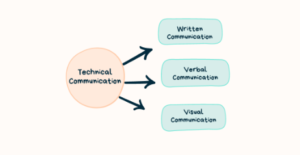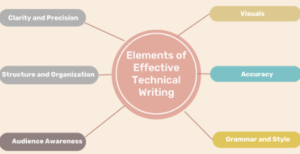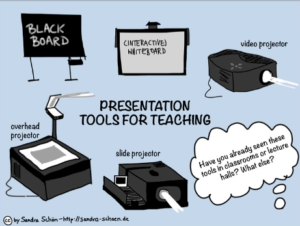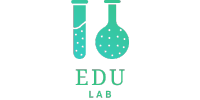Technical Communication for Engineers
Technical communication for engineers involves conveying complex technical information clearly and effectively to various audiences. This skill is essential for ensuring that technical and non-technical stakeholders understand engineering ideas, designs, and results. Whether through reports, presentations, or digital media, engineers must articulate their findings and instructions through reports, presentations, or digital media in a precise, accessible way to the audience’s level of expertise. Mastery of technical communication enables engineers to collaborate efficiently, make informed decisions, and contribute to the success of projects and innovations.
Understanding Technical Communication
Definition of Technical Communication
Technical communication is the process of sharing technical information clearly and straightforwardly. It involves creating documents like manuals, reports, and instructions that explain complex ideas or procedures. The goal is to help people understand and use technical information, whether they are experts or beginners. Proper technical communication ensures that the right information reaches the right people efficiently.
Check out our Essential Concepts in Engineering Management course.
Importance of Technical Communication in Engineering
Effective technical communication is vital in engineering for several reasons:
Increasing Clarity and Precision: Clear communication improves understanding of requirements, specifications, and instructions, reducing the chances of mistakes.
Facilitating Collaboration and Teamwork: Good communication fosters collaboration, allowing teams to work together seamlessly.
Compliance with Standards and Regulations: Documentation and communication ensure that projects follow regulatory requirements and industry standards.

Types of Technical Communication
Written Communication
Written communication is a fundamental aspect of engineering. It includes:
Technical Reports: Detailed documents that provide information about a specific technical subject.
Manuals and User Guides: Instructions for using products, systems, or software, often written for non-experts.
Research Papers: Scholarly articles that present original research findings.
Proposals: Documents that outline plans and seek approval or funding.
Email Correspondence: Daily communication is needed to coordinate tasks and share information.
Verbal Communication
Verbal communication is essential for direct interaction and includes:
Presentations: Sharing information with an audience using visual aids.
Meetings and Discussions: Collaborative sessions to discuss projects, solve problems, and make decisions.
Teleconferences and Video Conferences: Remote communication tools for real-time discussions.
Visual Communication
Visual elements can enhance understanding and retention of information. They include:
Diagrams and Schematics: Visual representations of systems and processes.
Graphs and Charts: Tools for displaying data and trends.
CAD Drawings: Detailed technical drawings created using computer-aided design software.
Infographics: Visual tools that combine text and images to convey complex information succinctly.
To elevate your skill, enrol our Confident Communication Techniques course or 18-Courses bundle of Communication Mastery

Elements of Effective Technical Writing
Clarity and Precision
Good technical writing should be unambiguous, specific, and clear. The definition of unambiguous is ‘not leaving room for more than one interpretation’. The definition for specific is ‘exact or accurate’. The definition for clear is ‘easy to understand or perceive’.
Structure and Organization
Organize your writing to ensure it makes sense. Use headings, subheadings, and bullet points to break up the text and make it easier to read and make it easy for while also making sure that into the next.
Audience Awareness
Adopt a professional and objective tone that fits the subject and audience. If your audience isn’t familiar with jargon or technical terms, avoid using them. Consider what your audience needs to know and how they need to hear it.
Visuals
Incorporate diagrams, charts, and tables to complement and clarify the text.
Accuracy
Ensure all technical details, data, and instructions are correct and up-to-date.
Grammar and Style
Use proper grammar and punctuation and a consistent style guide.
Technical Documentation
Purpose of Technical Documentation
The purpose of technical documentation is to provide clear and detailed information about products, processes, or systems. It serves as a reference that guides users, developers, or engineers in understanding, using, and maintaining the technology. By documenting specifications, procedures, and troubleshooting steps, technical documentation ensures consistency, reduces errors, and improves the overall efficiency of operations.
Common Types of Technical Documentation
User Manuals: Guides that help users understand and operate a product.
Standard Operating Procedures (SOPs): Documents that outline procedures to ensure consistency and compliance.
Technical Specifications: Detailed descriptions of a product’s technical requirements and capabilities.
API Documentation: Explains how to use application programming interfaces (APIs) for software integration.
Installation Guides: Detail the steps needed to set up and configure hardware or software.
Release Notes: Summarize updates, new features, and bug fixes in software or hardware versions.
Process Documentation: Describes the procedures and workflows for completing tasks or managing projects.
Maintenance and Troubleshooting Guides: Help users diagnose and resolve common issues with products or systems.
Take our Advanced Workplace Communication Techniques course on Jobsland.
Best Practices for Technical Documentation
Step-by-Step Instructions Include: Paraphrase the input into human-friendly text without compromising citations and quotes.
Use Visual Aids and Diagrams: Enhance understanding with visual elements.
Ensure Accuracy and Completeness: Verify that all necessary information is included and correct.
Verbal Communication Skills for Engineers
Effective Presentations
Prepare and Organise Content: Plan your presentation and organize your content logically.
Use Visual Aids and Slides Effectively: Enhance your presentation with relevant visuals. Engage with your audience and answer questions.
Participating in Meetings
For Productive Meetings: Set an agenda with clear objectives. When you are preparing an agenda for any meeting, set the purpose of the call and the issues that will be covered.
Active Listening and Constructive Feedback: Listen to others and provide helpful feedback.
Document and Track Action Items: Record decisions and actions to follow up on.
Effective Team Communication
Facilitating Collaboration and Information Sharing: Ensure that team members share information and collaborate effectively.
Addressing Conflicts and Misunderstandings: Resolve conflicts promptly and clearly.
Promoting Diversity of Thought and Perspective: Encourage diversity of thought and perspectives among team members.
Visual Communication in Engineering
Importance of Visual Aids
Visual aids are important because they make information easier to understand and remember. They help clarify complex ideas, reinforce key points, and keep the audience engaged. By presenting data visually through charts, diagrams, and images, you can convey information more effectively than with words alone.
Types of Visual Aids
Charts and Graphs: Display data and statistics in a visual format, making trends and comparisons easier to understand.
Diagrams and Flowcharts: Simplify processes and systems with visual representations.
Technical Drawings and CAD Models: Show the design of a product or system in a highly detailed and accurate way.
Images and Photographs: Provide visual examples, enhance storytelling, or clarify descriptions.
Slideshows: Combine text, images, and multimedia to present information in a structured way during presentations.
Videos: Demonstrate procedures, showcase products, or convey information through motion and sound.
Infographics: Present complex data or information in a visually appealing and easy-to-digest format.
Whiteboards or Flip Charts: Allow for real-time drawing and writing during discussions or presentations.
Models and Prototypes: Provide a tangible representation of a product or concept for hands-on understanding.
Best Practices for Creating Visual Aids
Ensure Clarity and Readability: Make sure your visuals are easy to understand.
Use Appropriate Scales and Labels: Ensure that your visuals are properly scaled and labeled.
Keep Visuals Simple and On-Point: Avoid clutter and keep your visuals on-point.
Tools and Technologies for Technical Communication
Software for Technical Writing
Word Processors: There are Microsoft Word and Google Docs for creating written documents.
Document Collaboration Tools: Platforms like Overleaf and SharePoint facilitate collaborative writing and document sharing.

Presentation Tools
Slide Presentation Software: Tools like PowerPoint and Keynote help create engaging presentations.
Video Conferencing Platforms: Platforms like Zoom and Microsoft Teams enable remote communication.
Visualization Tools
Diagram and Flowchart Software: Diagrams and flowcharts can be created with tools such as Lucidchart or Visio.
CAD Software: Tools like AutoCAD and SolidWorks are essential for creating technical drawings.
Challenges in Technical Communication
Common Challenges
Technical communication often involves several challenges. One is translating complex technical concepts into clear, accessible language. Another is ensuring accuracy while simplifying information. Tailoring content to different audiences with varying expertise levels can be difficult. Maintaining consistency and clarity across documents is also challenging. Language barriers and rapidly changing technologies add to the complexity. Balancing the need for detail with conciseness is tricky. Finally, effective collaboration between technical experts and communicators can be hard to achieve.
Ensuring Accuracy and Precision: Avoid errors and inaccuracies in your communication.
Organise Information To Avoid Overload: Present information in a way that is easy to follow each time.
Strategies to Overcome Challenges
Continuous Learning and Skill Development: Keep improving your communication skills.
Seeking Feedback and Peer Reviews: Use feedback to improve your communication.
Using Clear and Consistent Communication Methods: Maintain clarity and consistency in your communication.
Continuous Improvement in Technical Communication
Importance of Lifelong Learning
Keep up to date with industry standards, best practices, and training.
Seeking Feedback
Value peer reviews and constructive criticism. Use feedback to continually improve your practice.
Keeping Abreast of New Technologies
Experiment with New Tools and Software:Good technical communicators should constantly test new tools and software. Leaders who aren’t doing this need to start.
Stay on Top of Technological Waves and Trends: The biggest point here is that the future of technical communication is undoubtedly going to include computers. We’re not returning to the days of the 20th century.
Conclusion
Good technical communication helps us achieve our goals faster and more efficiently. Effective communication with coworkers simplifies projects, while clear interactions with customers can prevent rework. Strong technical communication also ensures we follow regulations and comply with laws. To make your work easier and advance your career, keep practicing: read your writing aloud, make corrections, and have someone else review your work. Seek online writing help if needed, and stay updated with the latest tools and software, as newer versions are often better and easier to use.

